#like he’s described as arrogant and violent and really only wanting fame and willing to use underhanded methods for it
Explore tagged Tumblr posts
Text
There was probably a part of living Douman that wanted to let Limbo take control, which made it so easy for him to do so, cause even if it’s early enough on that he’s not a complete monster, he’s still deeply envious of Seimei, so telling him that he’ll never surpass him is the easiest way to break him. And Limbo is a Douman that *does* have a shot at surpassing him (though he’s proving that by turning the city he protects into a hell on earth). He can attain his dearest wish, if he just gives in to the monster he’ll one day become….
#Infel’s fate tag#especially after reading his part in Abe no Seimei Monogatari Douman’s goals are really obvious#like he’s Ashiya Douman of course it’s all going to come back to Seimei!#I will place money on his interlude being about Seimei if he ever gets one too#anyway even if fate’s portrayal of his (younger) living self is more uhhh meek? than Abe no Seimei monogatari#he’s still someone that I don’t think ever had any deep love for the people#like he’s described as arrogant and violent and really only wanting fame and willing to use underhanded methods for it#if he has act of life continuation that was probably stolen since that’s one of Hakudou’s techniques#Seimei studied under Hakudou and Douman did steal the secret texts with his techniques in the story#I hope it was through the whole Rika thing in Fate too I love that part lmao
4 notes
·
View notes
Text
The Underlying Christian Symbolism in Undertale: The Seven Deadly Soul Modes
Welcome to a theory series where I explore the latent religious symbolism in the 2015 video game Undertale. Now, I quick disclaimer before we begin: I don’t think that Undertale is at all intended to be a primarily or even secondarily religious game; like all video games, it was designed first to entertain. That being said, the more I look into the deeper mysteries and unanswered questioned of Undertale, the more I can’t help but shake the idea that the game content is drawing much more from religious elements than most people would expect. For Exhibit A: The 7 Soul Modes.
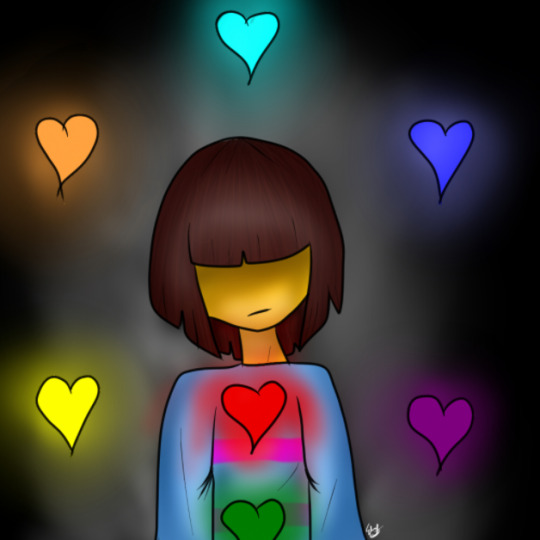
Throughout the game, the “Soul” is used to represent the avatar of the player whenever they enter battles. They are also used, as Flowey says, to symbolize the “culmination of a person’s very being”, both yours and the characters around you. Souls and the differences between human and monster souls play a pivotal role in the lore of Undertale. Human souls are represented as upright colored hearts while monster souls are inverted white hearts. The player soul is red, but in the course of the game we encounter 6 other human souls colored light blue, dark blue, green, orange, yellow, and purple. These colors are said to correspond with the seven human children who fell into the Underground before us (the first human child also possessed a red soul, similar to ours). Also, by digging into the gameplay a bit we find that the six colors correspond to six virtues: light blue for patience, dark blue for integrity, green for kindness, orange for bravery, yellow for justice and purple for perseverance. It’s unknown exactly what the red soul represents, though it’s theorized to be a combination of all the others, the embodiment of love, or determination.
So far, all of this is well known among the fandom. But what if I told you that the seven souls not only correspond to humans and virtues, but to monsters and the seven deadly sins?
The first part of this may not be a surprise; it’s pretty obvious that some soul are associated with the monsters who will activate them on you during battle. Interestingly, every major boss in the game WHO’S NOT A DREEMURR (Toriel, Asgore, and Asriel) uses at least one soul mode on you. Papyrus will turn your soul dark blue during a fight, Undyne green, during Mettaton’s fight you’ll be turned yellow, and purple during Muffet’s. Light blue and orange are not encountered as direct soul modes, but they are seen in bullet attacks; a light bullet requires you to remain motionless to avoid harm while orange requires you to do the exact opposite and run through it to avoid injury. Though these attacks are not directly linked to any particular monsters, for the purpose of my theory I believe light blue is linked to Sans while orange is linked to Alphys, as both of these characters are the ones who respectively explain their attacks.
So now we have six soul colors coded to six monsters: dark blue for Papyrus, light blue for Sans, Green for Undyne, Orange for Alpyhs, Yellow for Mettaton, and Purple for Muffet. Here’s where it starts to get interesting.
Each of these characters exhibit one of the Seven Deadly Sins. For those of you who need a refresher theological course, the Seven Deadly Sins are Sloth, Greed, Envy, Wrath, Lust, Gluttony, and Pride. While all of these behaviors are at various points condemned in the Bible (Proverbs 6:9, 21:26, 27:4, 22:24,6:25, and 23:21, for those of you who really want to look it up) lumping them together as a group and elevating them to “The” Seven Deadly Sins is a product of the Catholic church; they are not distinguished from other sins in the Bible. Regardless, each character shows one of these traits.

We’ll start with the most obvious one: Undyne struggles with Wrath. I don’t really have to argue this one since her first, second, third, and fourth encounter with the player character involve repeatedly attempting to pincushion them with spears, regardless of whether or not the player has harmed anyone. Even after making friends with Undyne, she still shows many unsettling violent tendencies.
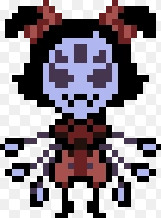
The next most obvious Sin correlation is Muffet, who clearly embodies Greed. Anyone who would try to charge you 9999 gold for a croissant roll clearly has an unhealthy love of money that goes beyond trying to raise cash for a good cause.
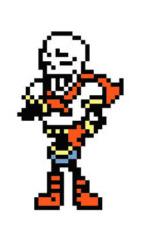
Papyrus is a bit tricky, because many would say that his character’s fatal flaw is Pride. He certainly does act conceited and narcissistic when you first get to know him, and his overly-inflated ego never quite goes away. However, the longer the character gets to know Papyrus, the less it seems that Pride is really his defining trait, and in any case, there’s another person on this list that deserves it more. Papyrus really seems to struggle with Envy more than pride; all of his bravado and self-touting big talk is really the result of longing to be more popular and prestigious. Papyrus envies Undyne’s position as captain of the Royal Guard, he envies the popularity of others, the massive amounts of friends, prestige, fame, and “showers of kisses” that he imagines his idols to have at their disposal. He envies the life of a celebrity and wants it for himself. For this reason I would say that Papyrus most strongly exhibits the sin of Envy.

Going next to the lovable skeleton’s brother, we find Sans, who’s Deadly Sin has to be gluttony. Now, many would argue that Sans should be associated with Sloth, since his character is repeatedly described as lazy and slacking off by Papyrus. Sans certainly makes an effort to come off as a lackadaisical goofball, with his lame puns and illegal hot dog stands, but a closer look reveals that this lazy joker routine is a ruse, at least in part, designed to throw unsuspecting players off guard should they wander down the wrong path. When we finally do get the chance to fight Sans, we find that quite the opposite from being lazy he’s easily the hardest fighting and most skilled opponent we ever face. More than that, we constantly get clues in the game that Sans is FAR more active than he seems: he can be seen constantly following us and keeping tabs on our location, he’s running multiple oddball jobs all while maintaining a position in the Royal Guard, taking care of brother Papyrus, and apparently, if the hidden room behind his house is to be trusted, doing scientific research on the side. Sans will even flat out admit to us that his brother is dead wrong about him being lazy, should we choose to insult Papyrus during the time we hang out with Sans at Grillby’s. Though he never bothers to correct his brother, it seems obvious that behind the scenes, this skeleton is working his tailbone off (Sans pun; I apologize)
On the other hand, there’s nothing feigned about San’s love of food. While many other characters in the game (Toriel, Undyne, Muffet, Mettaton, ) do show interest in cooking and food, Sans is repeatedly asking us to come out to eat with him. Half of his side jobs and side scams involve peddling food to people. He chugs an entire bottle of ketchup right in front of us at Grillby’s and stacks over twenty hot dogs on our head when we run out of room in our pockets. If that isn’t gluttony, I don’t know what is.
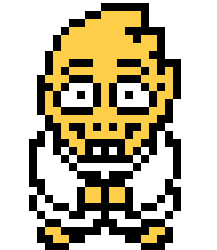
Sans may not deserve the label of Sloth, but Alphys does. Obviously, there’s her otaku anime binge-watching habits to out her into this category, but the issue of Sloth seems to go much deeper with her character: it’s less about pure laziness and more about trying to avoid responsibility. Certainly we see signs that Alphys can and does work incredibly hard at times; Mettaton’s body and the True Lab are proof of that. However, the True Lab journal entries reveal another side of Alphys: her refusal to own up to her mistakes. Alphys makes a habit of running from her problems instead of facing them; hiding from the angry letters of the amalgamates families, Asgore’s phone calls, and really anything that makes her feel bad. She lies to avoid others thinking poorly of her rather than doing the work to fix the problems she created. For that reason, this dinosaur scientist gets the label of Sloth.
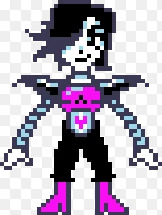
It should come as no surprise that Mettaton is guilty of the deadliest sin, Pride. Unlike Papyrus, his massive ego DOES seem to be his defining trait; he has the flamboyance and charisma (sort of) to pull that off into appearing a successful television icon, but throughout the entire time we know him he really does seem to think that everything is all about him, and he’s more than a little willing to hurt others (Napstablook, Alphys, the player) to get the and glory he deserves. He may be humorous to watch, but arrogance really is a fatal flaw for Mettaton.
So this leaves us with one sin left: Lust. At first, I couldn’t find anyone who fit this trait; Undertale is more or less designed to be a kid friendly game, none of the characters are openly lewd or provocative. None of them seem to be particularly sex-driven either; aside from possibly Dogamy and Dogaressa, both of whom seem far too minor to fill this role. I tried squeezing random awkward choices to fill the category of “lust” within the game: Aaron, Tsundereplane, Moldsmal, even Toriel, but none of them came even close to fitting the pattern. It seemed my theory had finally fallen apart on this last point. And then I realized that the answer had been staring me right in the face the whole time.
In fact, there IS one character in Undertale who seems to be completely hormone driven, flirting with literally anything that dares to stumble across their path. And wouldn’t you know it; it’s the character associated with the final soul mode. You know who I’m talking about: it’s Frisk, the human child and the player character.
There have already been plenty of jokes about how excessively Frisk likes to flirt with things, (https://www.youtube.com/watch?v=6HtHIYKJXh0) but the more I think about it, the more I have to agree with Toriel, something is not quite right with this kid. Frisk apparently has no compunctions flirting with a goat, a skeleton, a piece of sentient mold, a fish lady, a dinosaur, a volcano, an airplane, a robot, and a clinically depressed ghost. Maybe it’s all played off in a cutesy childish way, but that is some Jack Harkniss level of over the top flirtation. Yes, it may be a family friendly way to depict lust, but it’s lust nonetheless.

So their you have it. The Seven Soul modes in Undertale correspond not only to their respective virtues but also to their associated Sins; Green to Wrath, Purple to Greed, Light Blue to Gluttony, Dark Blue to Envy, Orange to Sloth, Yellow to Pride, and Red to Lust. This correlation seems to be at least partially intentional on the part of Toby Fox; it always bothered me how Muffet was the only mini-boss to get her own exclusive soul mode, but it makes sense if these there to fill out the number. It also helps explain why none of the Dreemurr family members have easy to pin down obvious flaw, unlike the other main characters; they’re the only bosses not to use soul modes, and each of them seems to have a more complex and deeply woven role into the history of monsters than the other characters. In fact, two of these characters in particular bear striking resemblances to two very prominent Biblical figures; but that’s the subject for another post. See you next time!
#undertale#seven deadly sins#rpg#christianity#frisk (undertale)#papyrus#sans#Undyne#Alphys#Mettaton#Muffet
6 notes
·
View notes